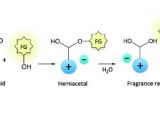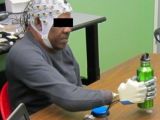It’s Sunday again, so, as per usual, it’s time to take a few minutes to review the coolest and the most important science news of the past few days.
Just like a couple of weeks back, when the cosmos entertained us with a total solar eclipse, the single most important and absolute coolest thing that happened since our last round-up was nature’s work.
Yup, we’re talking about the total lunar eclipse that played out yesterday, April 4. Curious to know what else happened in the world of science this week? Just go on reading then.
10. CERN researchers discovered the Force
This week, brainiacs with the European Organization for Nuclear Research (CERN, for short) pretty much rocked our little world when they announced the discovery of the Force. Yup, the exact same Force as the one everybody kept going on and on about in “Star Wars.”
As if discovering the Force weren’t enough to completely turn our lives around, CERN scientists claim to have also found a way to control it and use it to reheat coffee, open doors, and fly spacecraft with the power of their mind.
OK, so this piece of news isn’t true. It’s just a practical joke that CERN researchers played on us for April Fools’ Day, and a pretty hilarious one for that matter. Still, wouldn’t it be amazing if the Force were real and we could harvest it?
9. Scientists revealed Mr. and Mrs. Perfect
With the help of volunteers, researchers put together a set of images showing what Mr. and Mrs. Perfect would look like. You know, if they really existed. Otherwise put, what these specialists did was create the portraits of the ideal man and woman.
To assemble the portraits of Mr. and Mrs. Perfect, the scientists behind this project had volunteers use special software to design the ideal male and female face. The resulting images were then rated by other volunteers and the absolute best were blended together.
Since the study was carried out in the UK and only involved volunteers in this country, the portraits can’t really be considered to be those of the world’s best-looking man and woman, seeing how beauty standards vary a great deal across the globe.
8. Prestigious Johns Hopkins University sued
This past April 1, nearly 800 plaintiffs filed a lawsuit against the prestigious Johns Hopkins University in the US, accusing the institution of having been involved in a study during which people were deliberately infected with STDs, syphilis and gonorrhea included.
The study was conducted in the 1940s and the 1950s in Guatemala at the request of the US government. The women, men and children who were infected with STDs to see if penicillin could help them had no idea what was being done to them, and many ended up dead.
The Johns Hopkins University insists that it had nothing to do with this research and that the US government alone is to be held responsible. The thing is that, when people affected by the study tried to take measures against the US government, the lawsuit was dismissed.
7. Super cool science-made perfume unveiled
Just in case some still have doubts about it, here is further proof that science can make our otherwise perfectly average lives way better: this week, researchers unveiled a super cool perfume that smells better the more the person wearing it sweats.
The perfume, not yet named, is designed in such a way that, when exposed to moisture, it releases more of its fragrance. Besides, the chemistry enthusiasts who created it say that it can absorb the bad smells bacteria on our skin produce when breaking down sweat.
Scientists say that the same chemical principles that explain why this perfume smells better when coming into contact with sweat could serve advance medical research. Thus, they could be used to design drugs whose active ingredients are released in very specific circumstances.
6. Medieval potion shown to kill modern superbug
MRSA (that’s Methicillin-resistant Staphylococcus aureus, in case anyone was wondering) is a modern antibiotic-resistant bacterium. Oddly enough, it looks like a medieval potion described in a centuries-old book dubbed Bald’s Leechbook can kill it.
The potion in question, essentially a salve that people in the 10th century used to treat eye infections, is made with garlic, onion, wine and cow bile. In a series of experiments, it destroyed an impressive 90% of the MRSA bacteria exposed to it.
True, this does not mean that we should all kick modern medicine to the curb and embrace drugs and treatments from the Middle Ages instead. Still, the discovery that this potion can kill MRSA is proof enough that we shouldn’t be too quick to dismiss old cures either.
5. Mandatory water restrictions announced in California
This past Wednesday, the US state of California announced its first mandatory water restrictions ever, all thanks to climate change and global warming. Thus, the restrictions were imposed because of a severe drought that’s been going on in this corner of the world for a few years.
During the conference announcing the restrictions, Governor Edmund J. Brown Jr. detailed that the state was to implement measures intended to curb water use by 25%. He further explained that the measures would target not just agricultural practices but also individual consumers.
Prolonged drought aside, it looks like what pushed California over the edge and forced Governor Edmund J. Brown Jr. to implement statewide water restrictions was the fact that the state’s snowpack is now at its lowest in over 100 years.
4. Bionic hand controlled via thoughts alone
A paper published earlier this week describes an innovative bionic hand that can be controlled by its wearer via their thoughts alone. Specifically, the hand is made to move by a computer program that guesses what the wearer wants and gets the prosthetic limb to abide.
In a series of experiments, the bionic hand was shown to have an accuracy rate of 80%. Interestingly, specialists believe that, should the computer program it needs to operate be further refiner and with a little more practice, an accuracy rate of 100% is well within reach.
Since this bionic hand can be operated without any need for sensors implanted either in the brain or in any other body part, the researchers who designed and developed it argue that it is considerably safer than most of the other high-tech artificial limbs thus far created.
3. Cancer drug proven effective against Alzheimer’s
Developing new drugs is tricky business and so it often happens that scientists, well, mess up. On one occasion, however, they didn’t mess up quite as badly as they assumed. Thus, in a recent investigation, a drug designed to fight cancer was proven effective against Alzheimer’s.
The drug in question goes by the name of AZD05030. When administered to laboratory mice, it reduced inflammation in their brain, restored connections between neurons and, consequently, helped the rodents regain their memory.
Although the study was carried out on mice, specialists believe that the drug could also help treat Alzheimer’s disease in human patients. Hence, efforts are now underway to debut a clinical trial involving a total of 152 volunteers diagnosed with a mild form of the neurodegenerative disease.
2. Eye drops gave researcher night vision
A biochemistry researcher claims that, having let a few of his buddies administer him a special cocktail of chemicals whose chief ingredient was Ce6 (Chlorin e6), a compound used to address visibility issues and even treat cancer, he found that he could see in the dark.
Yup, this guy claims that all it took for him to get superhero-like night vision was a few eye drops. He further details that the drops were so effective that, even in complete darkness, he could distinguish between objects as much as 10 meters (33 feet) away from him.
By the looks of it, the biochemistry researcher didn’t experience any serious side effects. On the contrary, he felt perfectly fine after having been treated with the Ce6-based cocktail. True, his eyes turned an odd black, but he didn’t stress himself over it.
1. A super cool total lunar eclipse happened
This past Saturday, April 4, a total lunar eclipse was visible from a few select regions across the world. The eclipse happened when the Moon moved into our planet’s shadow and was obscured by it. Unlike during other eclipses, this time totality only lasted for a few minutes.
Once the Moon was positioned in Earth’s shadow, its surface turned red because of the light seeping towards it from global sunrises and sunsets. Having the Moon turn red during an eclipse is a fairly common phenomenon, astronomers explain.
Another total lunar eclipse is set to happen later this year, on September 28. A few months later, on March 9, 2016, we’ll get to witness a total solar eclipse, like the one that played out just weeks ago, on March 20.
This concludes this week’s round-up of the best science news of the past few days. To stay informed, be sure to check this page again next Sunday. Another round-up will be waiting for you, as per usual.

 14 DAY TRIAL //
14 DAY TRIAL // 









